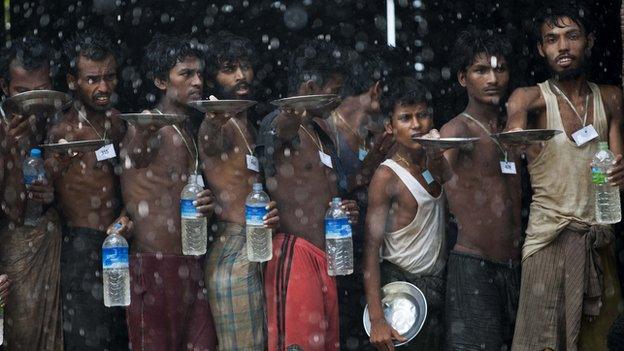Myanmar: Thein Sein leaves legacy of reform
- Published

Thein Sein has overseen reform
Like the overnight train from Yangon to Mandalay, Myanmar's reform process has been a bumpy, uneven ride.
Many say it lost momentum several years ago, others that it went into reverse.
But lift your eyes from the tracks, and take a step back.
Five years ago Myanmar, also known as Burma, was an international pariah, rusting in the sidings.
Sanctions were in place, and people were scared to speak their minds. More than 2,000 political prisoners languished in jail.
Now, as Thein Sein hands over the controls, external to Aung San Suu Kyi and her party the National League for Democracy, Myanmar is a country on the up.
Where once people were jailed for criticising the junta, there is now a vibrant media and open public debate. The economy's growing rapidly and a telecoms revolution is under way.
With a few exceptions, notably the Rohingya minority, life for Burmese people has got better, and much of the credit for that must go to the stewardship of Thein Sein.
His reforms have had three distinct, but interwoven tracks: politics, economics, and attempts to achieve a lasting peace.
Political reform
In the months that followed Thein Sein taking office in March 2011, external change came thick and fast. Censorship was lifted, private newspapers opened and a steady flow of political prisoners released from jail.
Then in 2012 Suu Kyi was persuaded to stand in by-elections. She won of course, but it was also a breakthrough for Thein Sein.
Overnight the much derided "white elephant" parliament in the capital Naypyidaw was legitimised. How can it be a joke if Suu Kyi is here?
After three years the reforms slowed and the sceptics started to shake their heads. Thein Sein continued to speak of change but made it clear that there were limits.

The minority Rohingya people have not shared in Myanmar's progress
There was no question of reducing the army bloc in parliament or the military's seats in cabinet, and the rule preventing Suu Kyi becoming president had to remain "to protect our sovereignty".
Political space has opened up but the red lines laid out in the 2008 constitution have remained.
This is "disciplined democracy", external, a hybrid system designed by the Burmese army, to guarantee its role. There is little doubt that many in the army see this as the final stop on Myanmar's reform journey.
Economic change
Those early political changes were enough to end Myanmar's international isolation.
Just over a year after Thein Sein became president the European Union suspended sanctions, and the US agreed to lift some of its restrictions, external.
Myanmar's leaders were aware of how badly their economy was lagging behind its neighbours, and options suddenly opened up beyond its usual trading partners in China and south-east Asia.
A complex exchange rate system was simplified and foreign companies were now welcome.
Tenders were issued to explore oil and gas blocks, and licences issued to companies from Norway and Qatar to build mobile phone networks.
Domestic reforms aimed to modernise a banking system that was still heavily dependent on cash.

Htin Kyaw is taking over as president
According to the statistics the Burmese economy is now one of the fastest growing in the world.
That new wealth can be seen in the traffic-clogged streets, construction sites and new five-star hotels of the commercial capital Yangon.
As yet there is little sign that this has brought change to the lives of the vast majority of Burmese who live in rural areas.
With economics, as with politics, Thein Sein leaves behind a job that many would see as half done.
For example the long discussed Myanmar Investment Law, external, which was supposed to simplify things for foreign companies, still hasn't been approved.
Those wanting to enter what is seen as Asia's "final frontier market" complain that the rules are contradictory, bidding for tenders corrupt and that land-ownership remains a mess.
The net result is that investors are knocking at Myanmar's door rather than kicking it down.

Thein Sein:
Born in a small village in the delta of the Irrawaddy river, in an area now known as Ngapudaw township. His parents were farmers.
Graduated with an arts degree from Burma's military academy in 1968 and rose steadily through the ranks in his 40-year career.
He reached the leadership circle in the 1990s when he became a member of the State Peace and Development Council, as the junta called itself at the time.
Made first secretary of the council after the downfall of former intelligence chief General Khin Nyunt in 2004.
Chaired the National Convention, which drafted the country's new constitution.
When the previous prime minister, Soe Win, fell ill, Thein Sein made acting prime minister in May 2007.
Served as prime minister for four years.
Became president in March 2011, after the country's first election in 20 years in November 2010.
Under his administration the government has freed hundreds of prisoners, including political detainees, embarked on peace deals with ethnic minority groups and relaxed media censorship.

Peace
While steady progress was being made elsewhere, it was always assumed that a nationwide ceasefire deal would be Thein Sein's legacy achievement.
After six decades of internal conflict there would be peace at last between the Burmese army and the country's many armed groups.
Initially it went well. In August 2012 Thein Sein announced that he was "holding out the olive branch to peace" and over the following few months more than a dozen rebel groups grasped his branch and signed bilateral agreements.
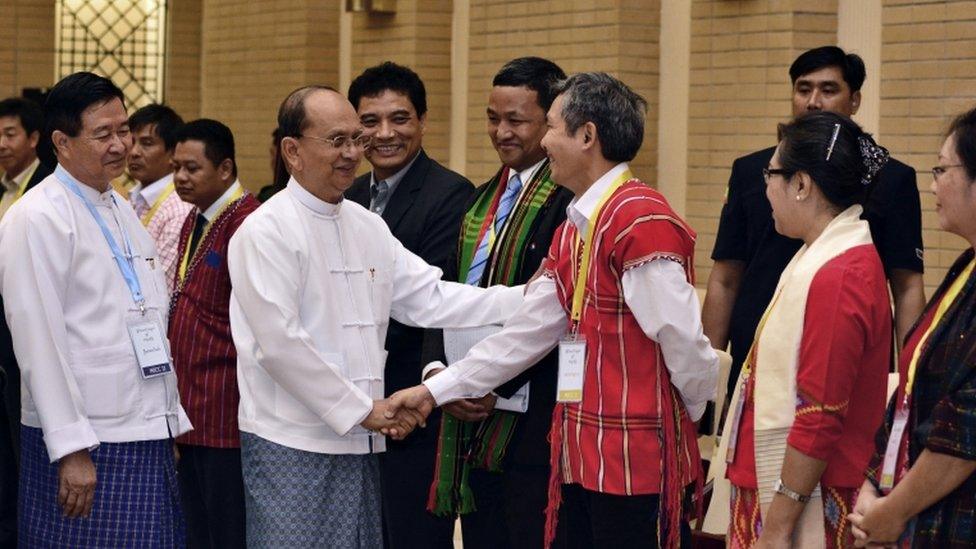
Thein Sein hoped the ceasefire signed with some of the rebel groups would herald a major step forward to peace
The aim was to get all the groups to come together to sign a Nationwide Ceasefire Agreement with the Burmese army that would lead on to substantive dialogue.
A year ago the text of a ceasefire was tentatively agreed and amid mounting excitement talk began to turn to which world leaders might attend the signing ceremony.
But at the last minute the rebels baulked and demanded more concessions. The best chance of peace Myanmar has seen since independence passed, external and since then things have become ever more complicated.
New rebel groups and conflicts have emerged and Burmese army offensives in Northern Shan State have cast fresh doubt on its commitment to peace.
Trust that had been nurtured over seven rounds of talks evaporated fast.
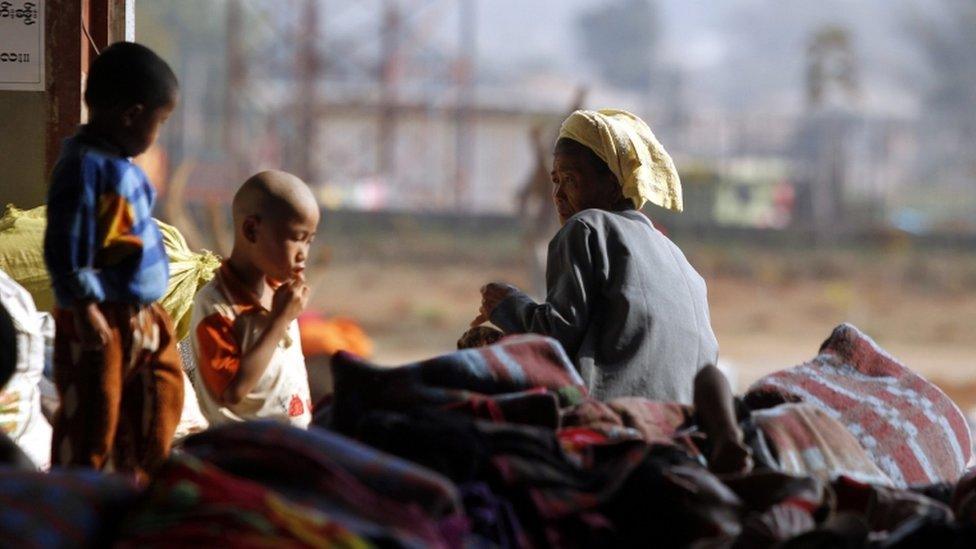
Many have fled conflict in Shan State
Then last October with discussions going nowhere Thein Sein gambled. Desperate to "lock-in" what had already been agreed, and give himself a pre-election boost, he issued the rebels a deadline to sign. It backfired.
Just eight of the 16 armed groups, external showed up in Naypyidaw to initial the great misnomer that is the Nationwide Ceasefire Agreement. All the more active groups stayed away.
Diplomats and consultants who had long backed the peace process were there, but the cheers rang hollow. Three years of patient inclusive talks had ended with a rushed signing, and a split among the rebels. It was a disaster.
In the months that have followed fighting has intensified in Shan State, both rebel on rebel and with the Burmese army. Thousands have been displaced from their homes.
The rebel leadership, both those who signed and those who stayed away must now wait to see what new ideas Aung San Suu Kyi brings to the table. She may well decide to start again.
What might have been Thein Sein's greatest accomplishment has ended up a bruising failure.
History
The Burmese public had a chance to give their verdict on Thein Sein last November. Of course it was so much more than a personal referendum, but it was humbling all the same.
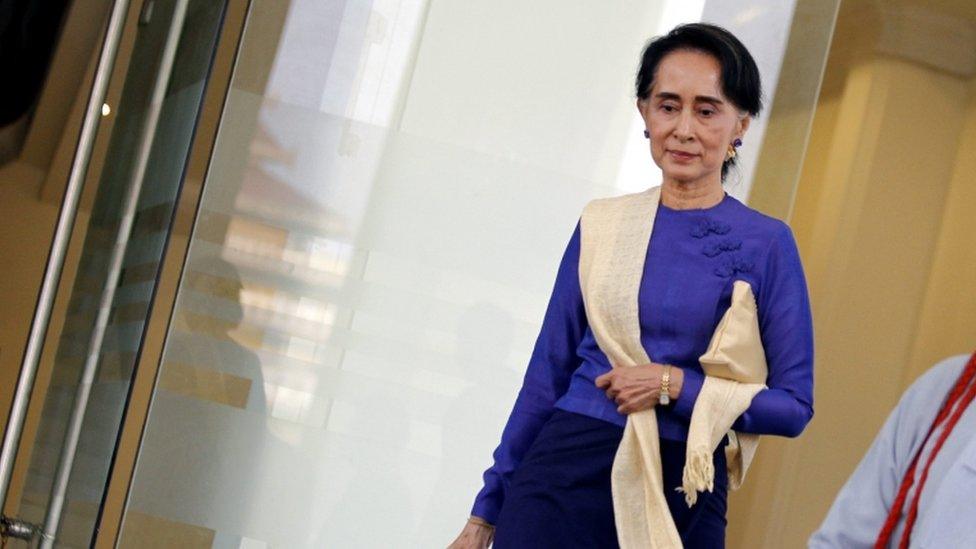
Aung San Suu Kyi is now a hugely powerful figure in Myanmar
In 2010 Thein Sein and his party, the USDP, won nearly 60% of the seats. In 2015 they achieved less than 10%. People wanted change.
History is likely to be more generous.
During his single term Thein Sein has lead Myanmar away from military rule towards democracy, from economic stagnation to growth, and made steps towards peace.
By anyone's standards it has been a remarkable five years.
All eyes are now on what comes next.
- Published15 March 2016
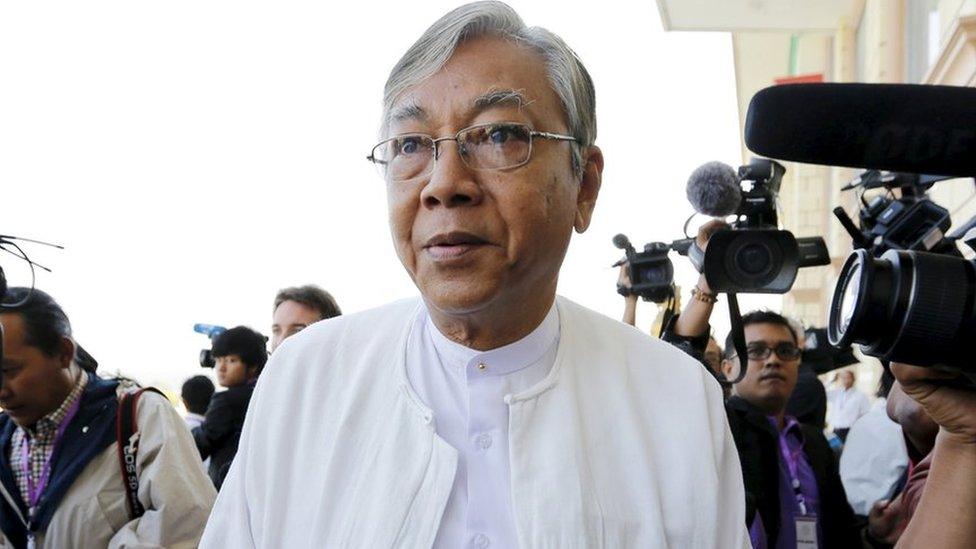
- Published15 March 2016
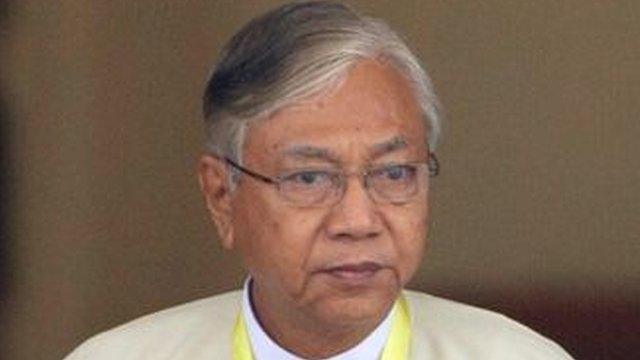
- Published29 January 2016
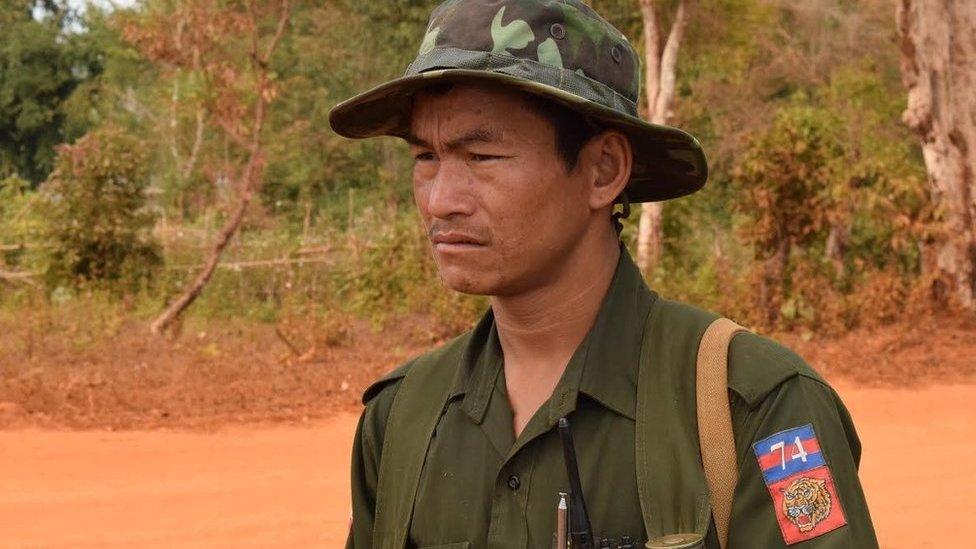
- Published15 October 2015

- Published10 June 2015
